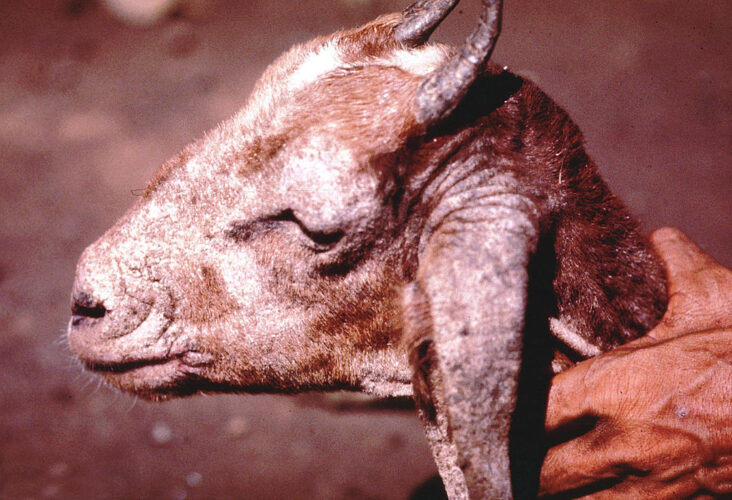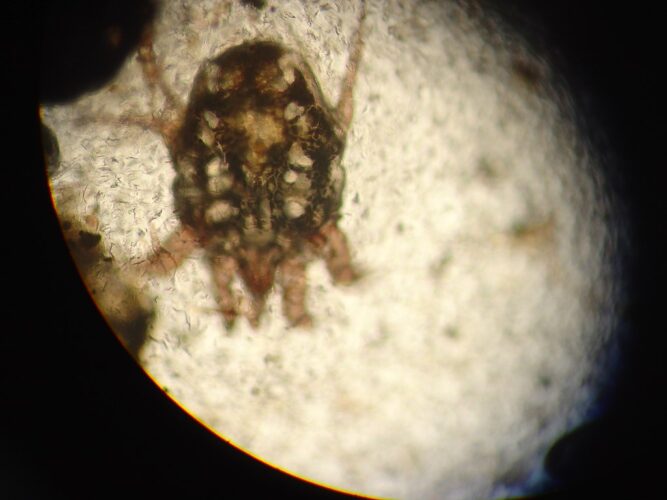Mange is a skin problem that can affect dogs, cats, horses, donkeys, cattle, goats and sheep. It can even affect wild animals.
Mange is caused by a tiny mite which burrows into the skin of the animal. It causes intense itchiness due to an allergic reaction to the mite’s faeces. The animal will scratch and this causes inflammation and hair loss. If left untreated sores can develop.
The animal becomes exhausted and will lose condition.
Because there are different types of mites, there are different types of mange. For example, ear mites target the ears of the animal. Sarcoptic mange, also known as canine scabies, is a highly contagious infestation of Sarcoptes scabiei var. canis, a burrowing mite. This can affect domestic animals and livestock.

Take special note if an animal is constantly rubbing itself against trees or walls and is always restless.
Treatment for mange on animals
Take the infested animal to a veterinarian for treatment. The vet will give it medication to treat the itchiness and the crusty scabs. This can be a topical ointment, but might also be in an injection.
The owner will have to dip the animal in order to kill the mites. Only use dip made for treating mange and dip the animal according to the instructions. Dipping may need to be done weekly for 2-3 weeks to kill the mites.
Do not use Jeyes Fluid, Madubula or used motor oil as a treatment for mange. These products are toxic to animals.
Isolate the affected animal. Thoroughly disinfect their bedding, and places they have occupied.
It may take some time for the hair to grow back.

if you groom your animals frequently and feed them a nutritious diet, they will be less likely to fall prey to mites.
Human beings can also be affected by mites called Sarcoptes scabiei. As the mites burrow and lay eggs inside the skin, the infestation leads to persistent itching and an angry rash. The condition is called scabies.
To read other articles about livestock click here.
To receive all our notices and each edition of SA Smallholder register here.
All photographs from Wikimedia Commons.

